THE MAN IN MY BASEMENT (2025)
An African American man is stuck in a rut, out of luck, and about to lose his ancestral home when a peculiar white businessman offers to rent his basement for the summer.
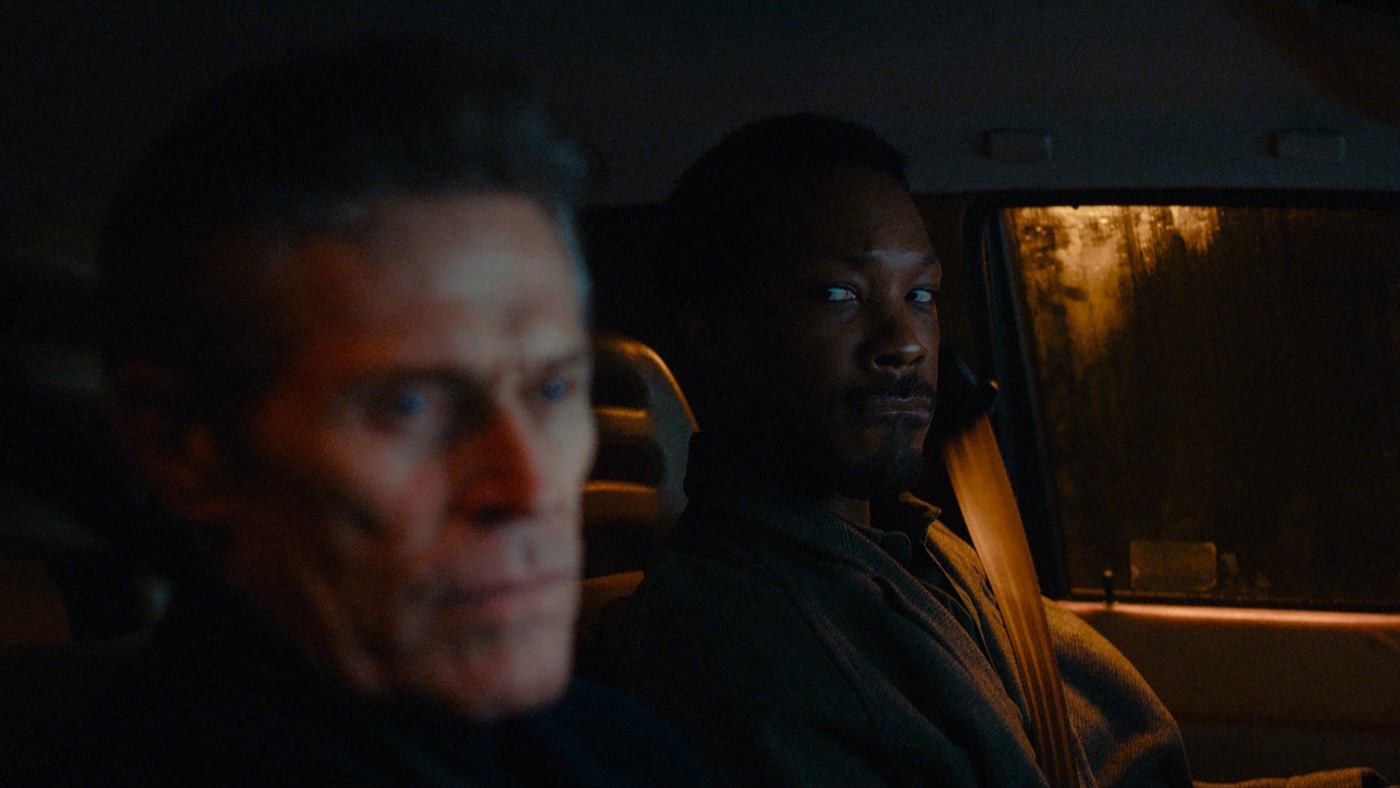
An African American man is stuck in a rut, out of luck, and about to lose his ancestral home when a peculiar white businessman offers to rent his basement for the summer.


The Man in My Basement is one of those ambitious films that tackles big issues by boiling them down into a small, intimate situation. It’s about complicity. An individual’s action or inaction cannot side-step culpability because our modern, ‘developed’ world has been built upon exploitation, which we are the beneficiaries of, simply by living in it. Remembrance of the past and what our forebears may or may not have done is a double-edged sword.
For one thing, strength can be found in the sense of identity that comes with knowledge and acceptance of one’s heritage. Conversely, we may unwittingly, or completely wittingly, be fuelled to continue a cycle of injustice instigated by our ancestors; we may perpetuate their prejudices. Maybe we can only atone for the evils of the past by attending to our present and actively moving towards a better, fairer future. For some of us, to become self-aware and mindful of how our actions affect others is the best contribution we can make. So, if you fancy sinking into a moody, often disquieting ponderance of trauma, mindfulness, identity, and the unfair distribution of power for nearly two hours, then The Man in My Basement is the film you’ve been waiting for.
Buried under a dialogue-driven narrative, the story is so slight that any attempt to provide a synopsis will spoil any of the surprises. The opening gambit has down-on-his-luck ‘loser’ Charles Blakey (Corey Hawkins) falling out with his friends while desperately trying to get hold of enough cash to keep the grand house that’s been his family’s home for eight generations. He’s pondering selling off its antiques and family heirlooms when a stranger, Anniston Bennett (Willem Dafoe), knocks on the door and asks to rent the basement, offering a substantial payment which happens to be enough to clear Blakey’s debts, enabling him to buy his house back. So, what’s the catch?
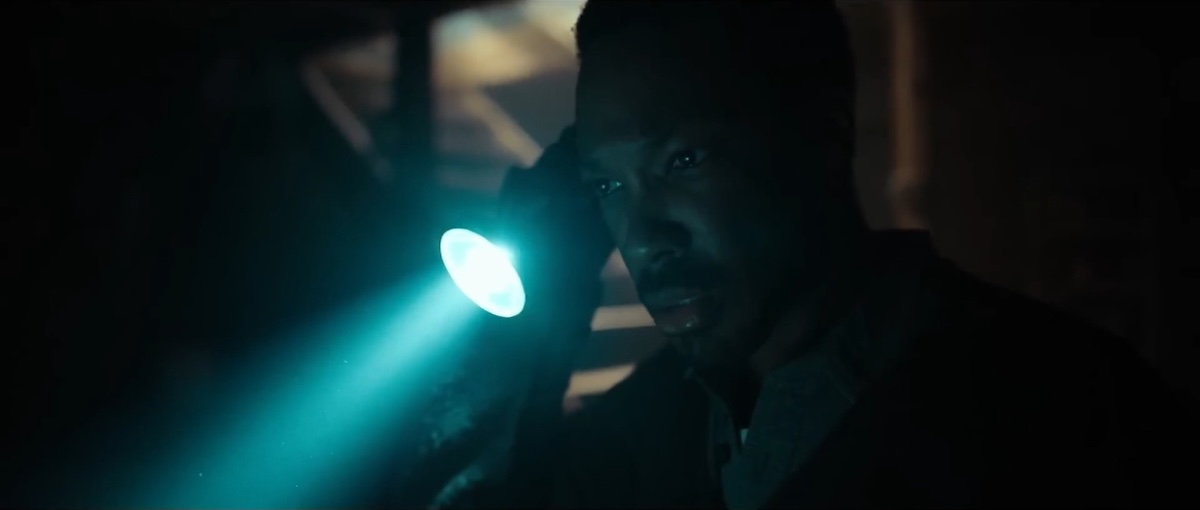
The first act is genuinely surprising. Well, it would be if you hadn’t seen the trailer and no one had recapped it to you. This is followed by an intriguing second act, hinting that something supernatural may be at play. By halfway, we’re still not sure what kind of film this will turn out to be. Crime thriller, political allegory, ghost story, social commentary… all these possibilities are dangled as red herrings, which it fails to reel in. It’s effectively engrossing, up to a point, but the deliberate pacing may lose some viewers even before the enigma evaporates during the ponderous and ultimately unsatisfying third act.
For director Nadia Latif, making her feature debut, this is something of a calling card as she elicits excellent performances all round from a very capable cast. Of course, Willem Dafoe is expectedly powerful and versatile as the chillingly calm Anniston Bennett, at least to begin with, in contrast to Corey Hawkins as the raw and real Charles adrift in life, an unlikeable yet still sympathetic character, which is a difficult balance to achieve. We gather he’s suffering from some sort of post-traumatic affliction, probably rooted in his childhood. Early on, we get some tried and tested tropes—such as his reflection being split—hinting at a hidden side, maybe some dark deeds he’s perpetrated in the past that even he hasn’t fully acknowledged.
Latif deploys the visual linguistics of horror with some flair but seems to lose her nerve after exploiting some ghostly tropes to hook the audience and intensify a pervasive sense of mysterious foreboding. But this is not a horror film. Though perhaps it would be better if it was, and at times it does feel like we may be heading towards something like the superior Get Out (2017), which tackles very similar topics in a far more engaging and rewarding way.
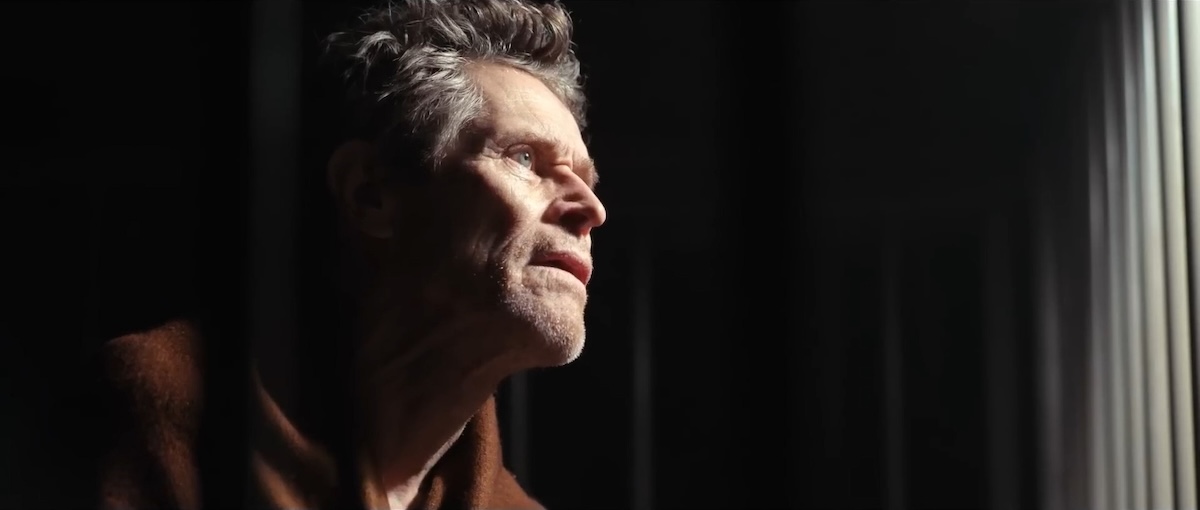
However, Jordan Peele isn’t foremost among Latif’s influences, instead citing the work of Charles Burnett as a key inspiration, particularly the critically esteemed Killer of Sheep (1978). However, it bears many striking similarities with another movie based around an extended and intense exchange between two men, one white and one black: The Sunset Limited (2011), directed by Tommy Lee Jones, who also stars opposite Samuel L. Jackson and was adapted for the screen by Cormac McCarthy from his own stage play. Just like Dafoe’s Bennett, the erudite white guy even has an interest in cultural artefacts—books, music, art—as the foundations of a civilisation that will ultimately be subsumed by the sins of the past. That film was generally well received and praised for its bravery in approaching big, difficult themes, while it was criticised for its artifice and ‘arch dialogue’. The same comments are also a good fit for The Man in My Basement, which could be taken as a loose remake.
Likewise, this leaves the central performances to do all the heavy lifting, although the cinematography by Ula Pontikos has its noteworthy moments. There’s some highly effective low-light and high-contrast that utilises darkness to obfuscate before blinding light briefly reveals. There’s also a deliberate visual language that veers from voyeuristic to intimate point-of-view shots and underlines whose perspective we are expected to align with.
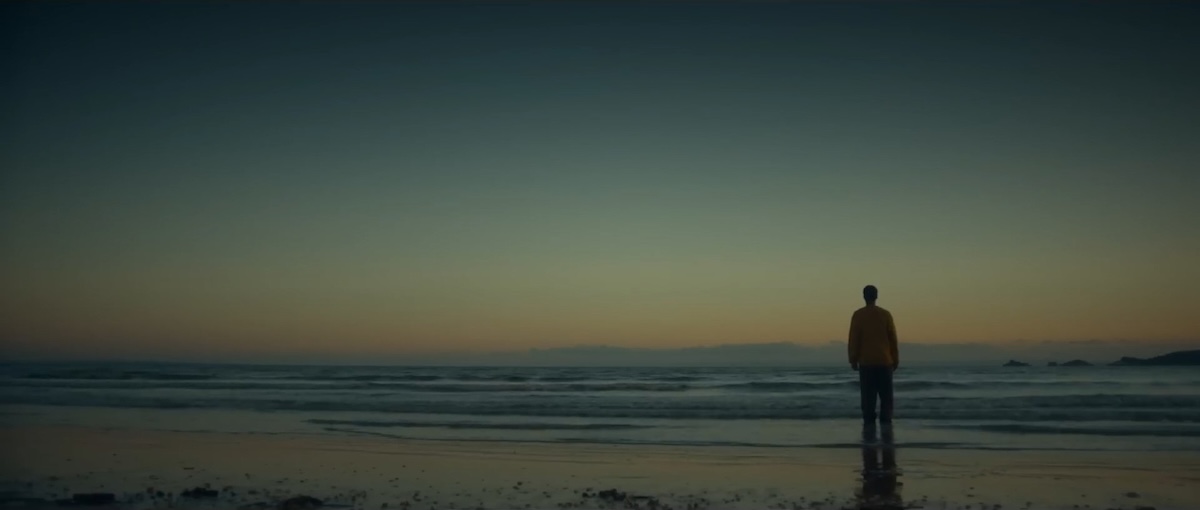
Corey Hawkins may be best known to some for his starring role as Dr Dre in Straight Outta Compton (2015), as Heath in The Walking Dead (2010–2022), or more recently, Dr Clemens in The Last Voyage of the Demeter (2023). Willem Dafoe is one of our great character actors with more than 150 credits to his name and recently appeared in another Dracula-related movie, Robert Eggers’ reinterpretation of Nosferatu (2024), after his memorable cameo in that same director’s Viking vengeance epic, The Northman (2022)… and his Bobby Peru in David Lynch’s Wild at Heart (1990) is unforgettable.
Everything hangs on the dynamic between these two men, which goes a long way to compensate for the limited sets and locations of a restrained budget along with the cumbersome and dialogue-laden screenplay. It would’ve worked so well as a two-hander stage performance between two such talented actors, and one can’t help wondering if cinema was the best format. It clearly would’ve worked better as a play or, oh yes, a novel.
The 2004 novel of the same title was adapted for the screen by its author, Walter Mosley. For me, the source material didn’t appeal as much as his other work because it seemed to progress from a preposterous premise. There’s a literary genre of taking an unusual concept and simply running with it until the author has explored and exhausted its potential. Novels like Franz Kafka’s 1915 classic The Metamorphosis, in which the central character, Gregor, transforms into a type of inhuman ‘vermin’, usually interpreted as a giant cockroach. Or Car, the 1972 novel by Harry Crews where Herman, the protagonist, sets about eating an entire Ford Maverick in a hotel ballroom before an audience. These are both literary examples of effective ways to create a claustrophobic, ‘pressure cooker’ environment that can be enjoyed as a profound metaphorical commentary on societal incongruities and cultural violence. By comparison, The Man in My Basement is either reassuringly or frustratingly pedestrian with a very human-scale concept that’s not nearly as grand, yet just as unlikely.
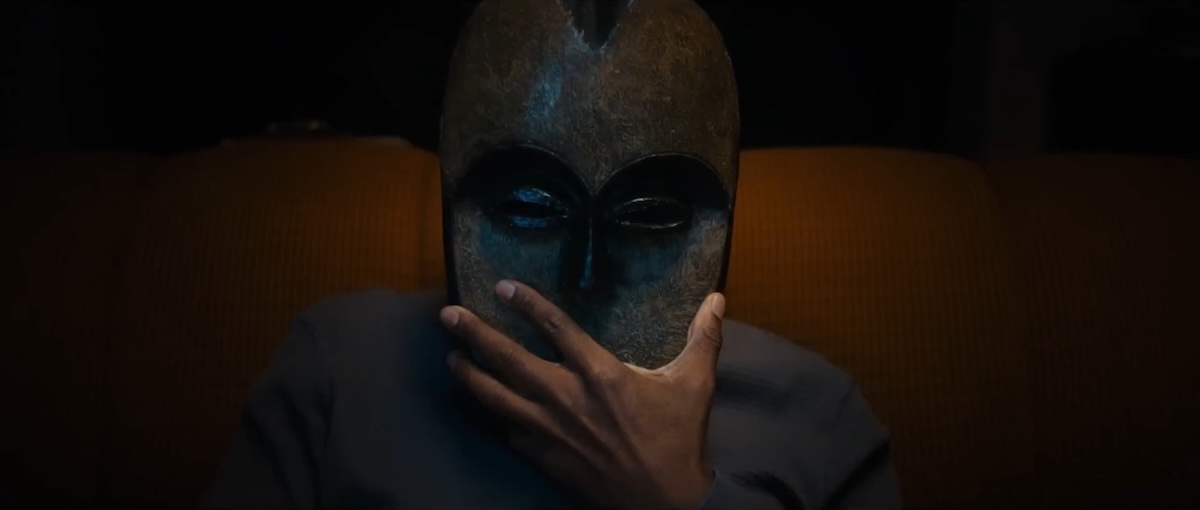
Perhaps the problem lies in Walter Mosley’s pin-sharp yet poetic prose, or rather the absence of it. The sheer flow and clarity of his writing is a major appeal of his books. Sure, the movie dialogue does its job, but I can’t help feeling it works better on the page than the screen. Also, the narrative certainly could’ve been curtailed by at least half its duration because we don’t get the internal dianoia of the characters that the literary format affords us. I haven’t read the original novel but count Mosley among my favourite living writers, having enjoyed a good cross-section of his works, mainly those flirting with the hard-boiled crime genre without fully conforming to it. Anyone looking for a good entry point would be better starting with Michael Apted’s Always Outnumbered (1998), also written for the screen by Mosley based on his own 1997 novel, Always Outnumbered, Always Outgunned—a character-driven crime thriller in the Socrates Fortlow trilogy, impressively fleshed out by Laurence Fishburne.
Walter Mosley certainly doesn’t shy away from political subjects and black issues, with The Man in My Basement being a blatant example. However, he’s not afraid to have fun either and has written for Star Trek: Discovery and a couple of mainstream graphic novels for Marvel. Often, his fiction dealing with the darker corners of humanity remain laced with a sharp wit that still finds the humour and absurdity amid life’s despair and misery. Sadly, I couldn’t really see that distinctive trait on the screen in The Man in My Basement, which, for the most part, remains humourless.
USA | 2025 | 115 MINUTES | 1.85:1 | COLOUR | ENGLISH

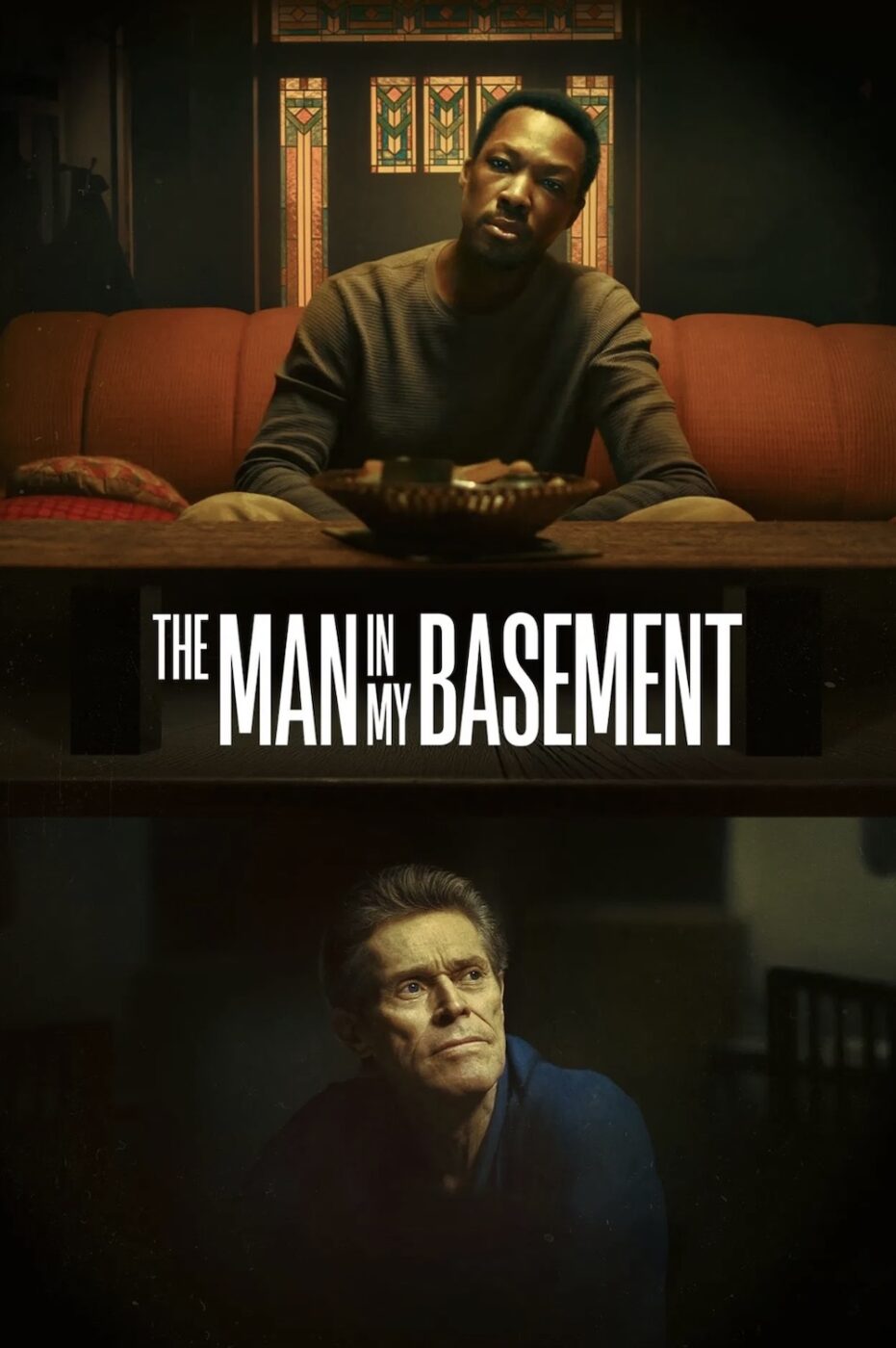
director: Nadia Latif.
writers: Walter Mosley & Nadia Latif (based on the novel by Walter Mosley).
starring: Corey Hawkins, Willem Dafoe, Anna Diop & Tamara Lawrance.
